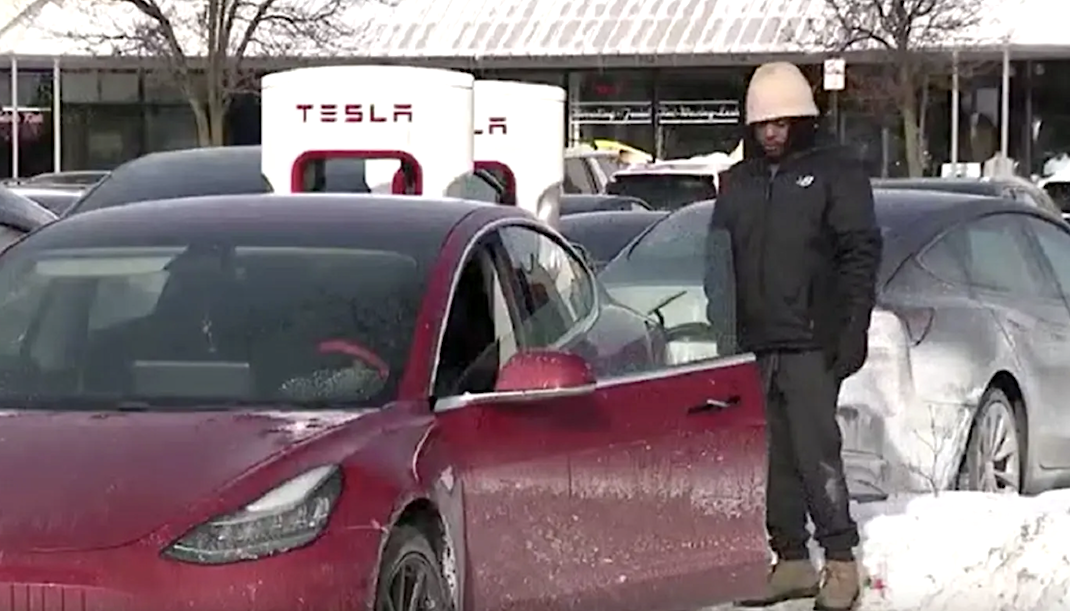Many people don’t realize that electric cars have been around for more than 100 years. One might think that the fact they have never caught on is more than a coincidence.
Yesterday, Robert Bryce provided testimony on electric vehicles to the Senate’s Committee on Energy and Natural Resources. His testimony is reproduced at his Substack site. It is all worth reading; here is an excerpt:
The history of the EV is a century of failure tailgating failure. In 1901, in an article headlined “Edison’s New Storage Battery,” the Los Angeles Times declared, “The electric automobile will quickly and easily take precedence over all other” types of motor vehicles. It said, “If the claims which Mr. Edison makes for his new battery be not overstated, there is not much doubt that it will make a fortune for somebody.”[ii] The media hype continued for the next 100 years:
* In 1911, the New York Times reported that the electric car “has long been recognized as the ideal solution” because it “is cleaner and quieter” and “much more economical.”[iii]
* In 1915, the Washington Post wrote that “prices on electric cars will continue to drop until they are within reach of the average family.”[iv]
* In 1959, the New York Times claimed the “Old electric may be the car of tomorrow.” The story said EVs were making a comeback because “gasoline is expensive today, principally because it is so heavily taxed, while electricity is far cheaper” than it was in the 1920s.[v]
* In 1967, the Los Angeles Times reported that American Motors Corporation was on the verge of producing an electric car, the Amitron, which would be powered by lithium batteries capable of holding 330 watt-hours of energy per kilogram. (That’s greater than the energy density of modern lithium-ion batteries.) Backers of the Amitron declared, “we don’t see a major obstacle in technology. It’s just a matter of time.”[vi]
* In 1979, the Washington Post claimed General Motors had achieved “a breakthrough in batteries” that “makes electric cars commercially practical.” The new zinc-nickel oxide batteries will provide the “100-mile range that General Motors executives believe is necessary to successfully sell electric vehicles to the public.”[vii]
* In 1980, the Washington Post claimed “practical electric cars can be built in the near future,” and that by 2000, the average family would own cars “tailored for the purpose for which they are most often used.” It went on to say that “In this new kind of car fleet, the electric vehicle could pay a big role – especially as delivery trucks and two-passenger urban commuter cars. With an aggressive production effort, they might save 1 million barrels of oil a day by the turn of the century.”[viii]
* In 2014, Tony Seba, an author who is currently a lecturer in “entrepreneurship, disruption, and clean energy” at Stanford University, declared, “By 2025, gasoline engine cars will be unable to compete with electric vehicles.” He continued, claiming that internal combustion engine (ICE) vehicles “are toast.”[ix]
Of course, none of that has happened. Electric vehicles remain perennially on the brink of commercial success.
The facts show something different. The ICE vehicle isn’t “toast.” ICE automobiles continue their overwhelming dominance in the marketplace. In 2023, EVs accounted for about 9% of all new car sales in the U.S. While that percentage has increased significantly over the past few years, and EV sales are growing, it is also clear that EVs face substantial resistance from automobile buyers.
As a result, Robert goes on to note, automobile companies are losing staggering amounts of money on their electric vehicles. And resistance to the technology, which has repeatedly proved inferior to internal combustion vehicles for over a century, is growing, not receding. As, for example, in Hertz’s announcement that it is selling one-third of the EV fleet in which it made a massive investment.
And then, of course, we have the spectacle of Teslas dying when the weather gets cold:
Desperate Tesla owners in and around Chicago were seen trying to charge their vehicles with no luck amid frigid temperatures that have gripped the Midwest.
Charging stations have essentially turned into car graveyards in recent days as temperatures have dropped to the negative double digits, Fox Chicago reported.
“Nothing. No juice. Still on zero percent,” Tyler Beard, who had been trying to recharge his Tesla at an Oak Brook, Illinois, Tesla supercharging station since Sunday afternoon, told the news outlet. “And this is like three hours being out here after being out here three hours yesterday.”
Beard and several other Tesla owners were trying to charge their cars amid long lines and abandoned cars at other Tesla charging stations in the Chicago area, the news station reported.
“This is crazy. It’s a disaster. Seriously,” said Tesla owner Chalis Mizelle.
Mizelle said she abandoned her car and got a ride from a friend after hers would not charge.
There are many situations, especially in northern climates, where peoples’ lives depend on their vehicles. Cars that don’t operate reliably in cold weather will get people killed. So don’t expect the fortunes of electric vehicles to rebound any time soon.

Notice: All comments are subject to moderation. Our comments are intended to be a forum for civil discourse bearing on the subject under discussion. Commenters who stray beyond the bounds of civility or employ what we deem gratuitous vulgarity in a comment — including, but not limited to, “s***,” “f***,” “a*******,” or one of their many variants — will be banned without further notice in the sole discretion of the site moderator.